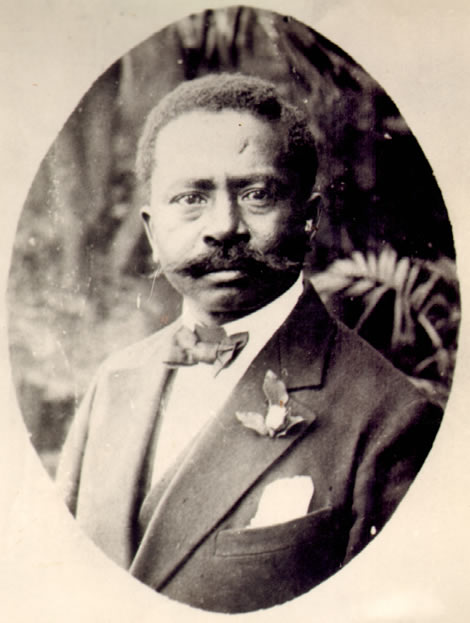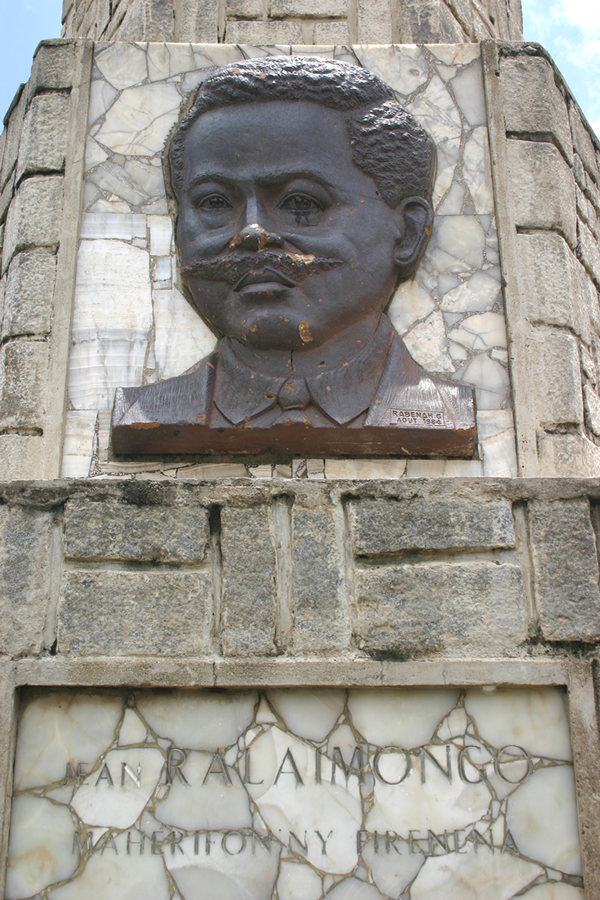 |
| Jean Ralaimongo |
In 1898, the French decided to interpret the "friendship treaty" signed with the last Malagasy queen as an invitation to transform Madagascar into a protectorate. Not everyone on the island objected to the changes, especially if, as in the case of future nationalist and socialist Jean Ralaimongo, they had been sold into slavery and released only upon the abolition of slavery effected by the French. Many longed for revolutionary changes to the traditionally rigid hierarchy that structured Malagasy society.
Ralaimongo absorbed French republican ideals enthusiastically and wanted to see them become practice in Madagascar. In the era before World War I, the majority of intellectuals optimistically expected that they would have the opportunity to advance toward independence and civilization under France's aegis.
The Sadiavahe resistance movement (1915–17) drew its adherents almost exclusively from the ranks of the peasantry in the southwest of the island, and their economic grievances were caused as much by the weather as by the Frenchimposed cattle tax.
  |
Many Malagasy men chose to join the French army in World War I. In return for their service, they received educational opportunities in the metropole and French citizenship. Ralaimongo remained in France until 1922, during which time he encountered various European radicals and future nationalist leaders from French colonies in Asia and Africa.
With his roommate, the man later known as Ho Chi Minh, Ralaimongo attended the seminal meetings for the formation of the French Communist Party. They also collaborated on the production of a newspaper meant to raise political consciousness among colonial peoples.
Those who remained in Madagascar during World War I lived through an incident that displayed the French will to remain in control of the island. After having repeatedly heard rumors of a revolt planned for late in 1915, the administration ordered a series of arrests on December 12.
The ensuing judicial processes concluded quickly. Those arrested belonged to the VVS (Vy Vato Sakelika, roughly Iron Stone Network), a group that had started to articulate an intellectual nationalism and that sought to prepare their compatriots for the distant day when they might take control of their own affairs.
The majority of those convicted for their associations with the VVS were lower-middle-class youths from varying ethnic groups, though the leaders of the group were generally students at the medical school, white-collar workers, and teachers.
Soon after the VVS affair and the end of World War I, France granted a degree of representative government to Madagascar. Those war veterans who returned to the island brought with them radical ideas and an intensified sense of nationalism.
In the 1920s, leaders adhered to the strategy employed by other African nationalists of the interwar period: Demand increased self-rule and the extension of European civil rights but not complete autonomy. Ralaimongo initiated his agitation from a base in Diego Suarez.
They demanded the creation of a council-general with real powers and a significant portion of Malagasy members, along with the abolition of the government-general and representation in the French parliament.
Financially backed by members of the business community, Ralaimongo allied former members of the VVS, French socialists, and Malagasy labor leaders in a single movement. From 1927, the group published two newspapers: L'Opinion (in Diego Suárez [now Antsiranana]) and L'Aurore Malagache (in Tananarivo).
The first mass demonstration occurred on May 19, 1929, after the French governor-general refused to receive any Malagasy to discuss the recent Pétition des Indigènes, which had presented the nationalists' requests. The unrest signified the existence of an embryonic sense of nationality. Little changed, however, and the administration did not listen to recommendations.
As a response to this inaction, nationalists became more radical in their demands. Ralaimongo, exiled to Port Beigé, started to advocate peasant resistance following the model popularized by Mohandas K. Gandhi. In 1931 he first suggested that Madagascar should break with France entirely. New groups and a more explicitly nationalistic, proindependence periodical press appeared after 1935.
However, the nationalist movement had lost much of its momentum by the later 1930s as the effects of the global Great Depression caused traders to withdraw financial support. Many middle-class Malagasy simply preferred the benefits they would accrue as French citizens to the uncertainty of independence.
 |
| Jean Ralaimongo Monument |
The mutations in French politics and foreign policy triggered by World War II yielded a new situation for colonies such as Madagascar. The administration decided to acknowledge calls for self-government. To start, the Malagasy elected two representatives to the constituent assembly in Paris.
French settlers and Malagasy each had their own electoral colleges, a situation that the Malagasy representatives actively criticized. Once in Paris, these two men, Joseph Raseta and Joseph Ravoahangy, along with Paris-based writer Jacques Rabemananjara, started the Democratic Movement for Malagasy Restoration (known by its French acronym MDRM). This political party attracted some 300,000 members from various ethnic and social groups.
Raseta and Ravoahangy rejected any identity for Madagascar other than that of a sovereign nation-state, so they did not support the territory's inclusion in the French union. Provincial elections in 1946 returned a large MDRM majority in the provincial and the national representative assemblies.
These political reforms did little to mitigate the various causes of tension that sparked the revolt of 1947. Together, the return of soldiers who had fought for France in World War II, food shortages, economic scandals, and ethnic disputes contributed to the deterioration of relations with the French administration. The nationalists who challenged French rule on March 20, 1947, managed to gain support across about one-third of the island before reinforcements could arrive from France.
The French outlawed the MDRM, despite its protestations of innocence, and military courts ordered the execution of 20 military leaders of the revolt. Trials of others involved in the uprising resulted in 5,000 to 6,000 convictions and sentences of either imprisonment or death. Malagasy independence remained to be won.